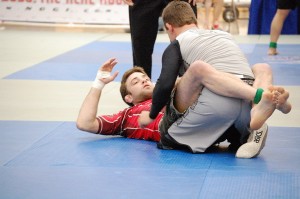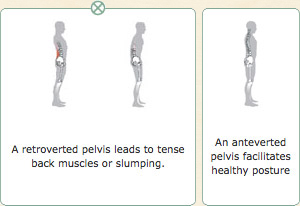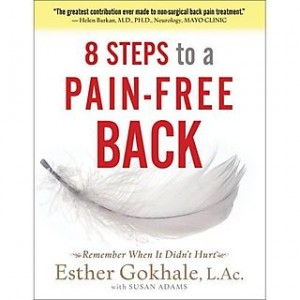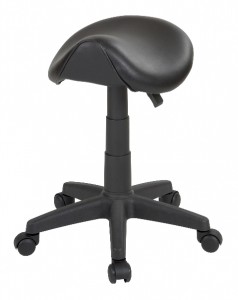BJJ is a combat sport and injuries happen. One of my friends injured her knee in the 2009 Pan Pacific BJJ comp. It took a long time to heal and she had just started training again when she re-injured it during wrestling class. This got me thinking about all the injuries I’ve witnessed during my years of training. The most common injuries are knee injuries and they almost always occur when training takedowns.
When a student is unskilled, a common takedown attempt is to grab their opponent’s upper body and try to trip her with their legs. Injuries can occur if the opponent’s foot sticks to the mat while her body is twisted. This twisting pressure can injure the tendons around the knee.
To stay safe, the wrestler must keep a lower stance which will help keep the feet mobile. Of course merely telling the wrestler this doesn’t help. They must practise in a way that develops a need to do so. With this in mind I changed the way that takedowns are trained. Since I’ve made this change, everyone’s standup grappling skills have improved, they are more confident on their feet and no injuries have occurred.
For two weeks, no takedowns were allowed. Students formed small groups with two students wrestling and the other few watching. The goal of the two wrestlers was to simply pick their opponent up so both feet are off the mat. The winner stays in and the next student comes in, round robin style.
The student is forced to have a good stance to be successful at this drill. Their hips must be low and away from their opponent while they fight for an advantageous grip. Once they’ve established a good grip, they must bring their hips under them to have the power for the lift. They are also learning how to sprawl with heavy hips to prevent being picked up themselves.
The natural progression of this drill is for the students to have their head too low and hips too far back, to prevent themselves from being lifted. When this happens, snapdowns are introduced. The rules are changed so that if a wrestler’s hand touches the mat he instantly loses. This rule change corrects the stance.
As there are no takedowns, there is no fear of being injured or slammed. Students stop being timid and more aggressively work their shots. When everyone is looking confident, the rules are changed so that merely picking the opponent up isn’t enough to win. They must also put (not slam) the opponent down onto the mat. This part of the drill is physically difficult as it requires lots of energy.
Next single leg takedowns are allowed. Then double leg takedowns, and finally any takedowns. We are now back to practising full takedowns, but everyone has much better stances. Their sprawls are better and also their pummelling has improved.
I really like the way that this sequence of drills worked to improve everyone’s standup grappling. It works well because the students teach themselves. Instead of saying “Bend your knees, hips back, head up”, I just say “Try to lift me up off the mat but don’t let me lift you up”. The drill does the rest.





